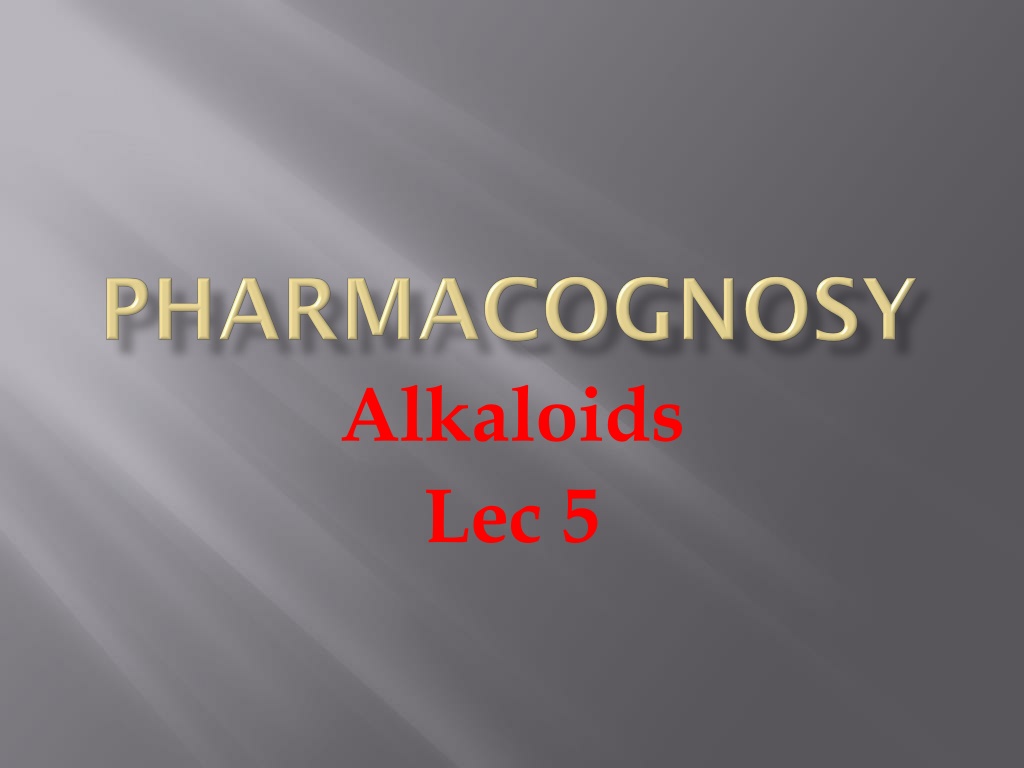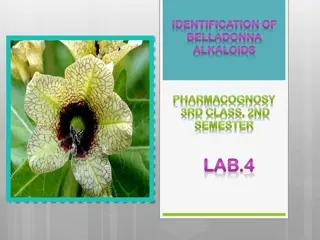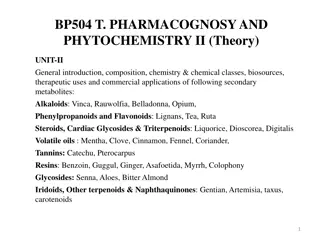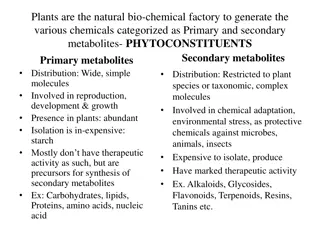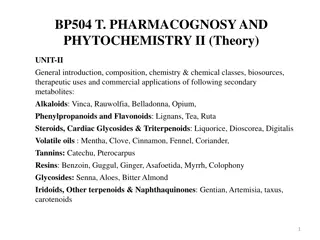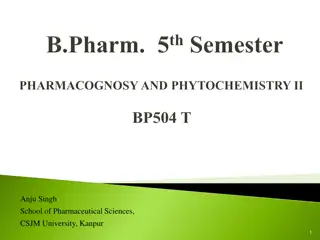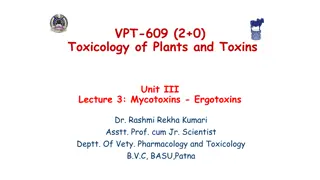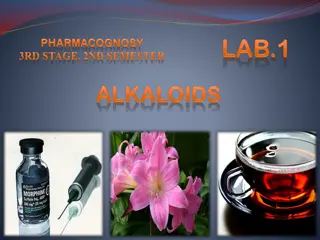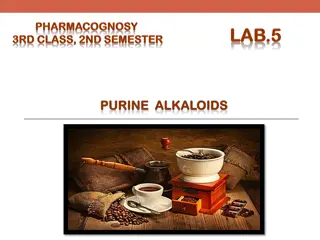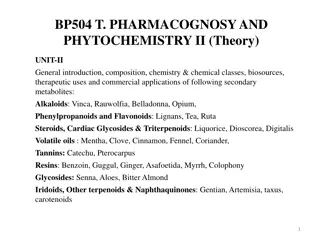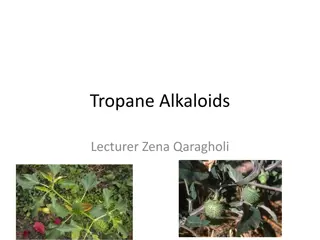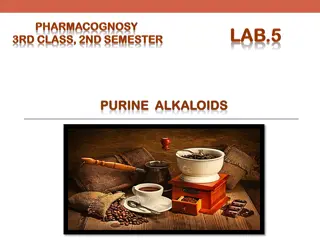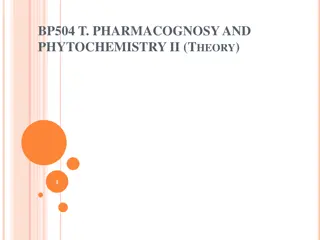Overview of Alkaloids in Pharmacology
Alkaloids are natural compounds found in various plants with diverse pharmacological properties. This lecture delves into alkaloids derived from sources like cinchona bark, discussing their structures, properties, and medical applications. It explores alkaloids such as quinine, quinidine, and ipecac, highlighting their uses in treating conditions like malaria and drug overdose. Additionally, the lecture covers the toxicity of cinchona products and the stimulating properties of Sanguinaria Canadensis. Opium, sourced from the opium poppy, is also examined for its opiate alkaloids like morphine and codeine.
Download Presentation

Please find below an Image/Link to download the presentation.
The content on the website is provided AS IS for your information and personal use only. It may not be sold, licensed, or shared on other websites without obtaining consent from the author. Download presentation by click this link. If you encounter any issues during the download, it is possible that the publisher has removed the file from their server.
E N D
Presentation Transcript
Alkaloids Lec 5
Alkaloids containing quinoline as their basic nucleus include those obtained from cinchona bark (Cinchona succirubra) ( quinine, quinidine, cinchonine, and cinchonidine). Cinchonine which is isomeric with cinchonidine, is the parent alkaloid of the quinine series. Quinine and it's isomer quinidine represent 6- methoxycinchonine.
. Quinine: An antimalarial from which newer drugs (e.g. chloroquine, mefloquine) have been developed. Also acts as an anti-arrhythmic, so avoid in heart disease. Used in tonic water Quinidine: closely related to quinine, a more potent anti-arrhythmic Biosynthesis: quinine is metabolically derived from monoterpenoid- tryptophan pathway.
Quinine and derivatives Image:Quinine-2D-skeletal.png Quinine (natural) Quinoline nucleus Mefloquine (synthetic) Chloroquine, based on quinine (synthetic) 220px-Mefloquine_structure Image:Chloroquine.svg
Overdose of cinchona products result in temporary loss of hearing and in impaired sight. Ringing in the ears is symptoms of toxicity. When these symptoms are produced as the result of continuous use of cinchona or of quinine, the condition has been called cinchonism.
Ipecac Consists of the dried rhizome and roots of Cephaelis ipecacuanah , it contain two isoquinoline alkaloids emetine and cephaeline. Ipecac in the form of syrup, is used in the treatment of drug overdose and in certain poisonings.
Is the dried rhizome of Sanguinaria Canadensis Fam. Papaveraceae. it contain isoquinoline alkaloids sanguinarine, chelerythrine, protopine and allocryptopine. Sanguinaria has stimulating expectorant and emetic properities. in toothpaste and mouthwash for the prevention of the development of dental plaque and subsequent periodontal disease.
Opium is the gummy exudate obtained by incising the unripe capsules of the opium poppy (Papaver somniferum, papaveraceae). Opiate:-nataural alkaloids contains more than 30 alkaloids, of which the major components are morphine, codeine, thebaine, papaverine and noscapine.
Morphine possesses both a basic tertiary amine and an acidic phenolic functional group, these groups allow morphine to be readily purified by acid and base. Morphine is an excellent analgesic. Morphine is readily converted into the drug of abuse, heroin by acetylation of both hydroxyl groups using acetic unhydride. Heroin is more potent analgesic than morphine that it s useful in patient with terminal cancer.
morphine pethidine codeine thebaine Diamorphine (heroine)
Codeine is an over the counter analgesic , cough suppressant and in small doses used to treat diarrhea due to it s antiperistalitic. Codeine is formulated with other analgesic agents such as aspirin and paracetamol. thebaine is the starting point for the synthesis of many agents, including codeine and veterinary sedative such as etorphine.
Papaverine (top) is a smooth muscle relaxant it was investigated for its calcium antagonist activity This led to the development of verapamil (bottom), a widely used calcium channel blocker
A generic term for these arrow poisons Most are mixtures of poisons from various plants of unrelated species and some animal toxins) They cause paralysis of muscle required to breathe when injected (e.g. using an arrow!) but are destroyed by stomach acid, so meat from animals killed by curare can be eaten Different strengths are used for different purposes not always to kill
The major active component of curare is tubocurarine. Tubocurarine use as a muscle relaxant in surgical procedures . It s also a template for the development of other muscle relaxant such as atracurium.
